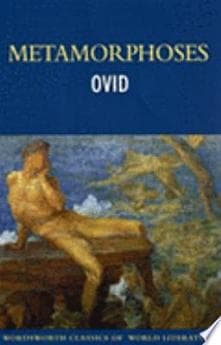- Published on
Metamorphoses
- Authors

- Name
- Ovid
- @search?q=Ovid

Summary of "Metamorphoses" by Ovid
Introduction
- Title: Metamorphoses
- Author: Ovid
- Translator: Horace Gregory
- Original Publication: 8 CE
- Key Themes: Transformation, Mythology, Creation, and Moral Lessons
Overview
"Metamorphoses" by Ovid is a seminal work of ancient Roman literature, comprising a collection of mythological narratives. It explores themes of transformation and change, intricately weaving together over 250 myths into a continuous thread of stories, each transitioning smoothly into the next.
Key Sections
1. Chaos and Creation
- The book opens with the creation of the world from chaos, describing how the elements were separated and the Earth, sea, and sky were formed.
- It narrates the creation of man, highlighting the transition from a world of chaos to one of order and life.
2. Ages of Gold, Silver, Bronze, and Iron
- The narrative then delves into the four ages of mankind: Gold, Silver, Bronze, and Iron.
- Each age represents a gradual decline in moral virtue and the state of the world, with the Iron Age being marked by strife and immorality.
3. The Flood
- Ovid recounts the story of the great flood, sent by Jove (Jupiter) to cleanse the Earth of its wickedness.
- Only Deucalion and Pyrrha survive, repopulating the Earth by throwing stones over their shoulders, which transform into humans.
Major Themes
- Transformation: The central theme of the work, emphasizing the constant state of flux in the universe.
- Power of the Gods: The narratives often revolve around the actions and whims of the gods, affecting humans and the natural world.
- Morality and Justice: Many stories highlight moral lessons, showcasing the consequences of hubris and immorality.
- Love and Passion: Various tales explore the complexities of love, often involving the gods and their interactions with humans.
- Human Nature: The book delves into human emotions, strengths, and weaknesses, portraying a range of characters and situations.
Significance
"Metamorphoses" holds a critical place in Western literature and culture. Its influence extends to numerous literary works, art, and philosophy, providing a rich source of mythological knowledge and insight into ancient Roman values and beliefs.
Conclusion
Ovid's "Metamorphoses" is a timeless masterpiece that captures the essence of change and transformation, both in the physical world and in human nature. Its stories continue to resonate, offering timeless wisdom and artistic inspiration.
